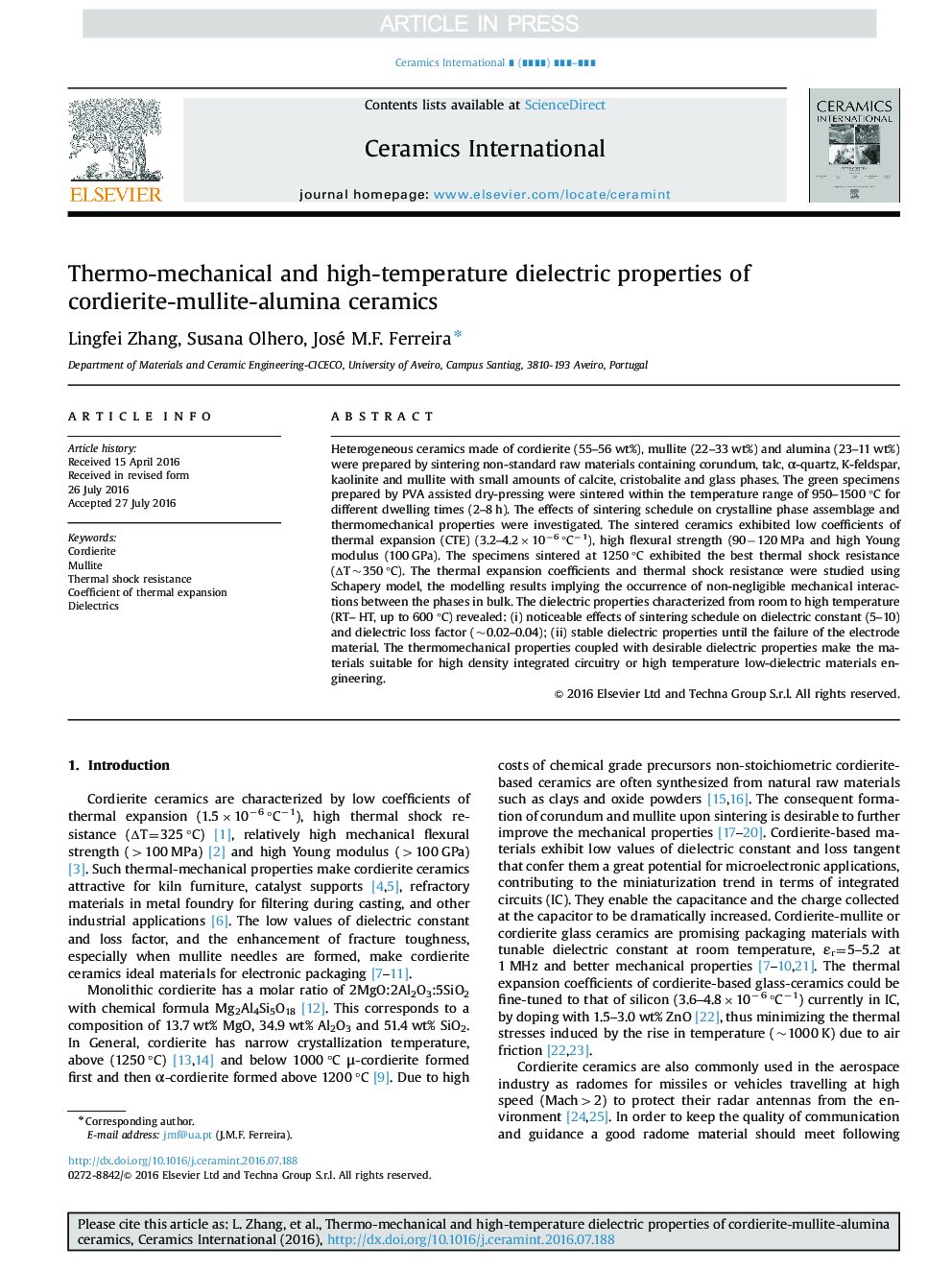| Article ID | Journal | Published Year | Pages | File Type |
|---|---|---|---|---|
| 5438744 | Ceramics International | 2016 | 9 Pages |
Abstract
Heterogeneous ceramics made of cordierite (55-56 wt%), mullite (22-33 wt%) and alumina (23-11 wt%) were prepared by sintering non-standard raw materials containing corundum, talc, α-quartz, K-feldspar, kaolinite and mullite with small amounts of calcite, cristobalite and glass phases. The green specimens prepared by PVA assisted dry-pressing were sintered within the temperature range of 950-1500 °C for different dwelling times (2-8 h). The effects of sintering schedule on crystalline phase assemblage and thermomechanical properties were investigated. The sintered ceramics exhibited low coefficients of thermal expansion (CTE) (3.2-4.2Ã10â6 °Câ1), high flexural strength (90â120 MPa and high Young modulus (100 GPa). The specimens sintered at 1250 °C exhibited the best thermal shock resistance (âT~350 °C). The thermal expansion coefficients and thermal shock resistance were studied using Schapery model, the modelling results implying the occurrence of non-negligible mechanical interactions between the phases in bulk. The dielectric properties characterized from room to high temperature (RT- HT, up to 600 °C) revealed: (i) noticeable effects of sintering schedule on dielectric constant (5-10) and dielectric loss factor (~0.02-0.04); (ii) stable dielectric properties until the failure of the electrode material. The thermomechanical properties coupled with desirable dielectric properties make the materials suitable for high density integrated circuitry or high temperature low-dielectric materials engineering.
Related Topics
Physical Sciences and Engineering
Materials Science
Ceramics and Composites
Authors
Lingfei Zhang, Susana Olhero, José M.F. Ferreira,
